COVID-19 and scuba masks: Invention out of necessity
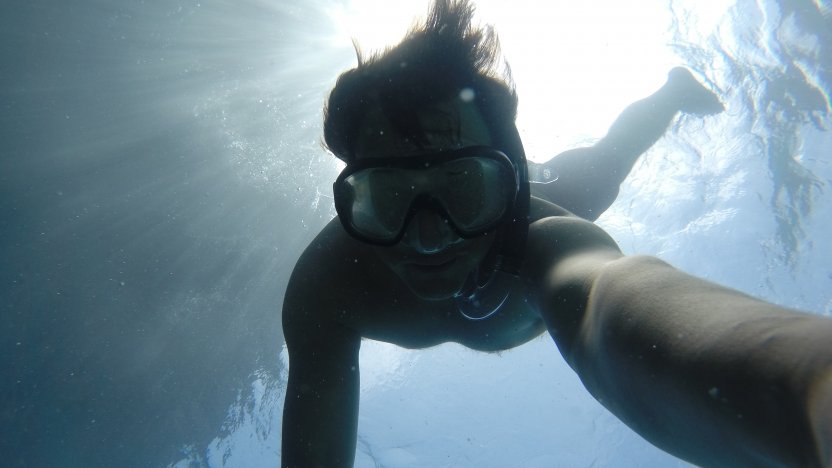
The current health crisis has inspired inventors from a wide range of industries and organisations to look for ways to help, including meeting the urgent need for protective equipment in hospitals. Eline Migeon shares how a scuba diving mask designed for leisure activities has been adapted for medical use.
When French company Décathlon invented the ‘Easybreath’ diving mask for amateur divers, it could not have conceived that the mask would one day be adapted for use in hospital.
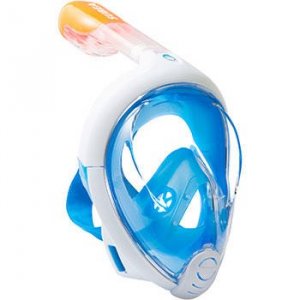 The full-face mask was registered as a patent in France with the description "Diving mask having an in-built snorkel" (FR3020620), as used for marine exploration in shallow waters (see image, right).
The full-face mask was registered as a patent in France with the description "Diving mask having an in-built snorkel" (FR3020620), as used for marine exploration in shallow waters (see image, right).
Full-face diving masks typically suffer some disadvantages, such as unnatural mouth breathing devices that cause difficulty in breathing, fogging on the inside wall of the visor causing poor visibility and inability to speak underwater.
Décathlon’s diving mask incorporates a snorkel to allow the user to breathe through the nose and mouth in a more natural way, thanks to two air flows:
- an intake channel for inspired air implanted in the snorkel; and
- an exhaled air exhaust channel implanted in the rigid frame of the mask.
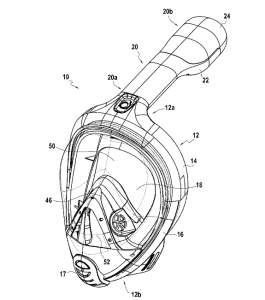 Due to the demarcation of two separate areas inside the mask, there is no fogging: An upper chamber for the eyes is dedicated to vision and a lower chamber for the nose and mouth is dedicated to breathing. The design also includes a passageway equipped with a non-return valve, ensuring the flow of air from the upper chamber to the lower chamber (see patent illustration, left).
Due to the demarcation of two separate areas inside the mask, there is no fogging: An upper chamber for the eyes is dedicated to vision and a lower chamber for the nose and mouth is dedicated to breathing. The design also includes a passageway equipped with a non-return valve, ensuring the flow of air from the upper chamber to the lower chamber (see patent illustration, left).
In order to prevent water from entering the snorkel, the snorkel mask is equipped with a mechanism to block the upper part of the snorkel when it is submerged (a movable float equipped with a sealing device). When the snorkel is submerged, the float moves and the inlet of the snorkel is sealed by the device.
From leisure to medical use
The COVID-19 pandemic prompted demand to adapt the Easybreath mask to meet the shortage of masks in hospitals. Décathlon reacted by sharing the mask’s plans and technical information. It also suspended all sales of the Easybreath mask to ensure availability of the masks.
In other words, the patent holder of the invention has given selected third parties the opportunity to exploit the invention; for example by means of a free licence or a non-commercial free exploitation agreement without compensation.
Several adaptations of the Easybreath mask have been produced. The first was by the Italian innovation company Isinnova in partnership with a hospital in Northern Italy (details here). Its objective was to overcome the shortage of non-invasive ventilation (NIV) masks connected to artificial respirators. This type of mask is used in patients with breathing difficulties: it offers ventilatory assistance by maintaining positive pressure during inspiration and provides oxygen. In this case, the full-face mask is suitable for ventilation of patients with respiratory disorders due to the Covid-19 virus.
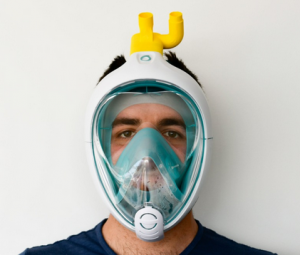 To deliver this, a new component was designed to connect the mask to an artificial respirator (see image, right). This component is a connection valve produced using 3D printing called 'the Charlotte valve', which replaced the Easybreath’s original snorkel.
To deliver this, a new component was designed to connect the mask to an artificial respirator (see image, right). This component is a connection valve produced using 3D printing called 'the Charlotte valve', which replaced the Easybreath’s original snorkel.
The valve has an inlet line connected to oxygen for the inspiration phase and an outlet line connected to a Positive Expiratory Pressure (PEP) valve to increase lung volume at the end of expiration.
A patent application has been filed for this invention in order to control the diffusion of the technical solution of the invention.
Why obtain patent protection?
On the one hand, Isinnova filed a patent application with the aim of preventing the commercial exploitation of its invention. On the other hand, the company has provided access to the details of the invention and an agreement to allow free exploitation of the Charlotte valve on a non-commercial basis, so that anyone can reproduce the Charlotte valve.
The exploitation of such an invention is possible provided that the patent holder has given its consent, as Isinnova has done in writing on its website, adding that the exploitation of its invention may only be carried out on a non-commercial basis. It is important to note that the exclusive right of exploitation takes effect from the filing of the patent application (as specified, for example in Article L613-3 of France’s IP Code concerning the exclusive right of exploitation).
Protection for nursing staff
The Easybreath mask has also been adapted by an engineering school in Franche-Comté. The University of Technology of Belfort-Montbéliard adapted the mask in partnership with the North Franche-Comté Hospital in order to help overcome the shortage of protective masks and to protect the hospital's nursing staff in the intensive care units. Here, the modification of the Easybreath mask offers staff protection against contamination.
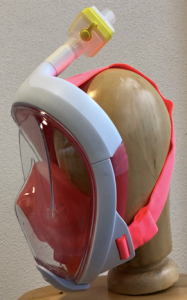 As with the Charlotte valve, a new component was designed to replace the snorkel component; in this case connecting the upper end of the mask to a disposable filter (see image, left). This component is also produced using 3D printing. The new connector part is designed to ensure a perfect seal and is compatible with the majority of available breathing filters.
As with the Charlotte valve, a new component was designed to replace the snorkel component; in this case connecting the upper end of the mask to a disposable filter (see image, left). This component is also produced using 3D printing. The new connector part is designed to ensure a perfect seal and is compatible with the majority of available breathing filters.
In contrast to the earlier example, this invention has not been protected as a patent. Instead, the design plans and digital mock-ups are freely available, which allows for the full reproduction of the invention. The design has been reproduced by other institutions and implemented in many French hospitals.
Full-face masks, such as Décathlon’s Easybreath mask, have been a focus for inventors in the context of the current health crisis because they have the advantage of being reusable. At the end of each use, they can be disinfected and the connection valve/component and filters changed ready for reuse.
The patent registered for the original mask (and spin-offs) gives its owner control over how the product and technical solution is disseminated and exploited.
Eline Migeon is a Patent Engineer at Novagraaf in France.